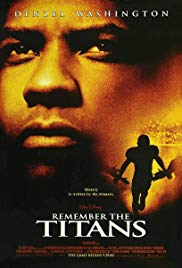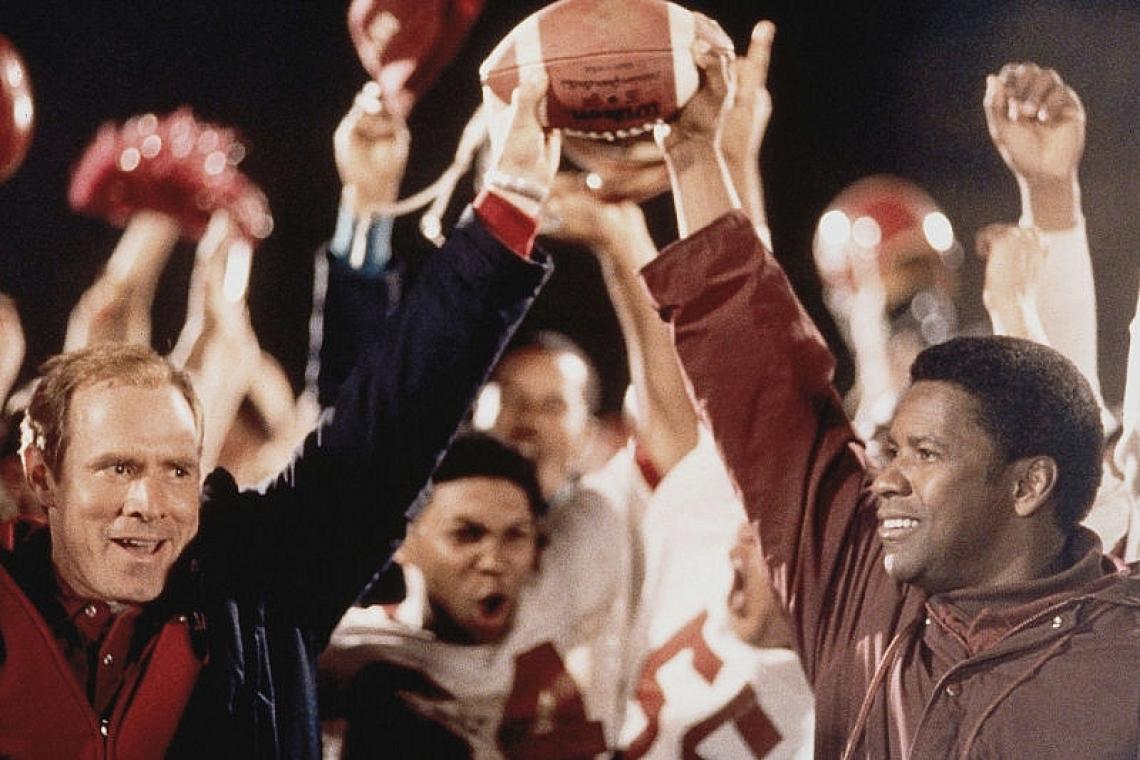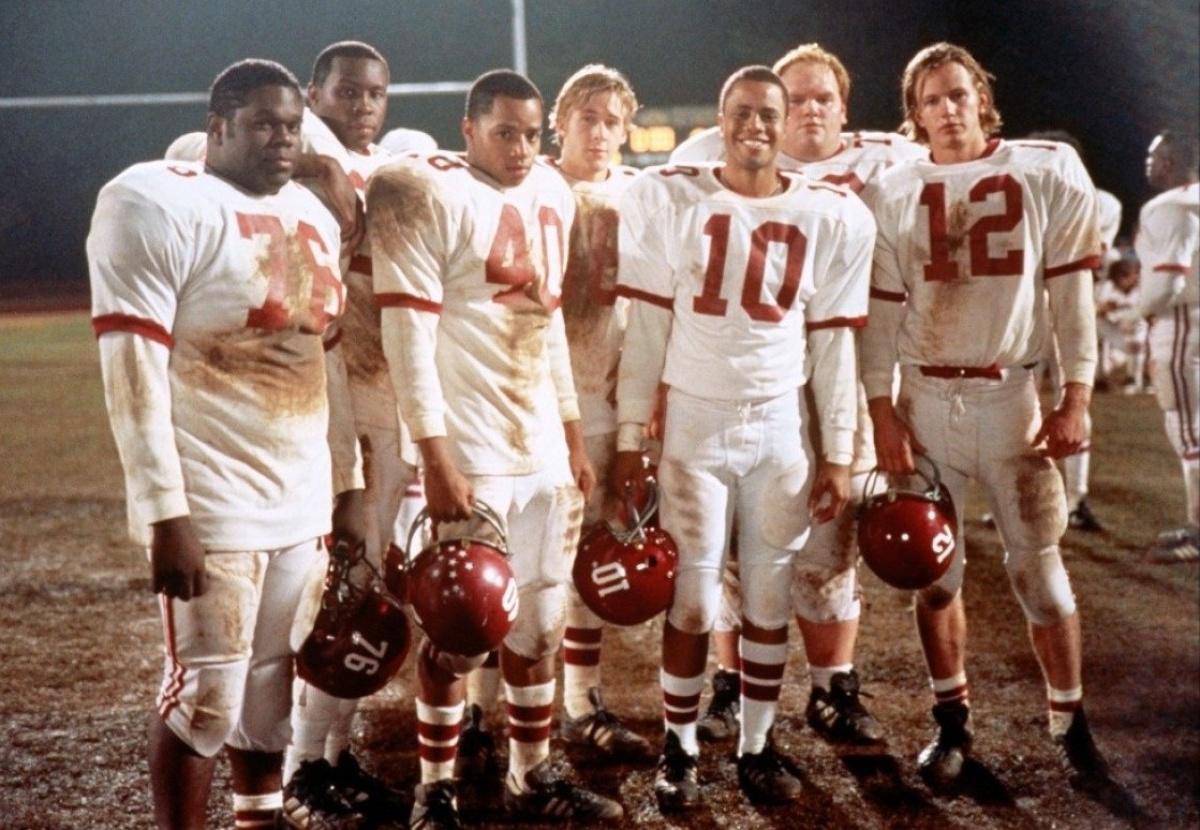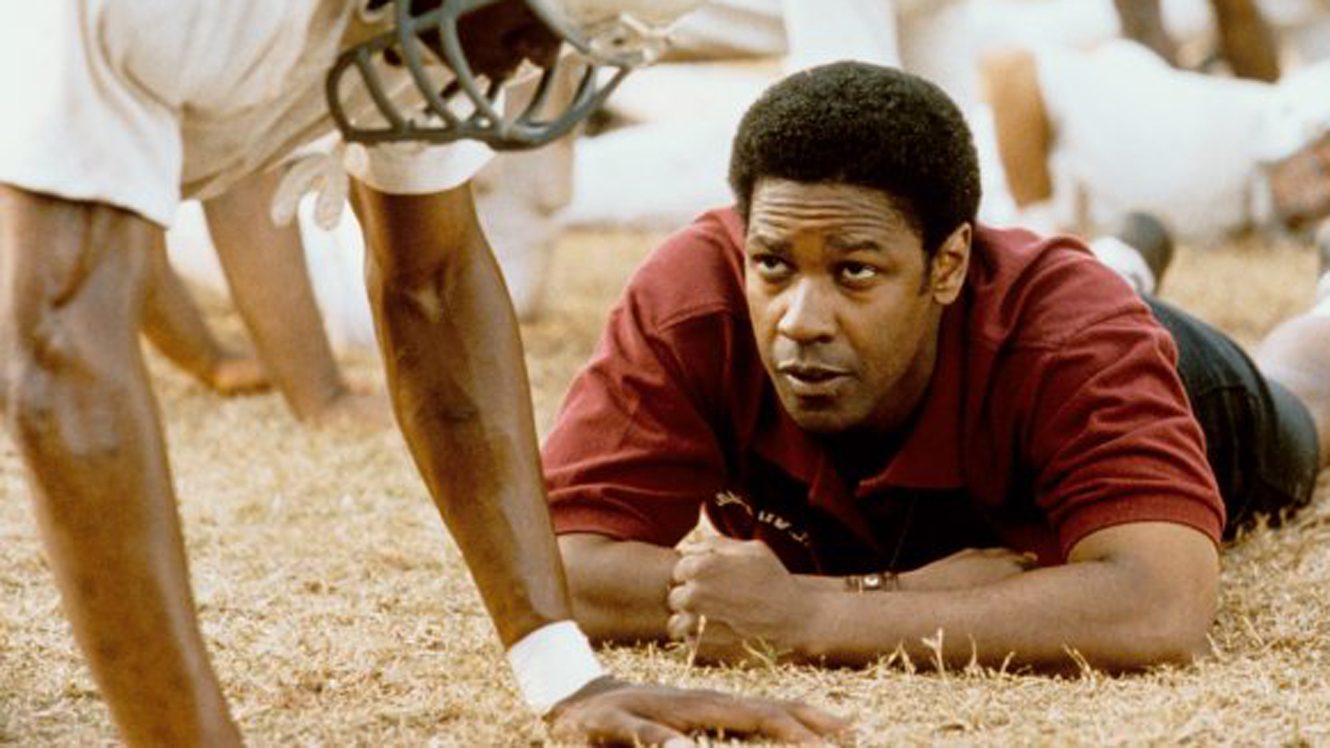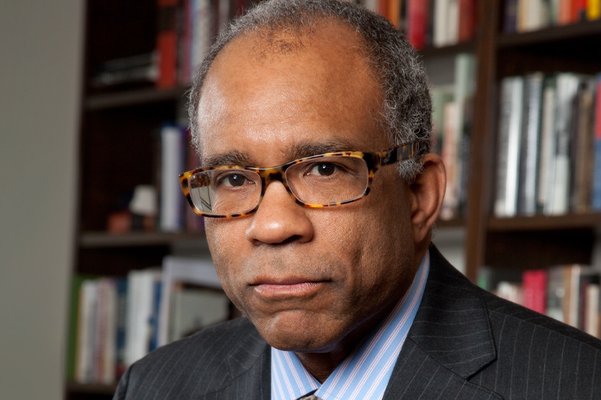1. What events in the film show that “sometimes life is just hard for no reason”?
Suggested Response:
The two automobile accidents that Bertier was involved in. The first accident paralyzed him and the second killed him. These are real events.
2. Is the story of the Titans unusual for what occurred in the South during the time of the Civil Rights Movement from 1954 on?
Suggested Response:
Yes and no. Yes, in that it was so dramatic. Yes, because in a crucial year, this football team was led by two phenomenal coaches and two amazing players. Yes, in that during a year marked by racial violence throughout the nation, an entire town took its cue from the football team and remained calm. It’s not unusual in the sense that during this period many courageous black men and women, like Coach Boone, took risks to change society. Black young people, like Campbell, let go of their rage and forgave. Courageous white people, like Bertier and Coach Yoast, realized what was really important to them (in this case the team) and took principled but unpopular stands. This happened all over the South, perhaps haltingly at times, with backsliding often, but ultimately the actions of people like Boone, Yoast, Bertier and Campbell improved the lives of many people in that region.
The four questions which follow relate to rites of passage.
3. Define the term “rite of passage.” Tell us in your answer the difference between a “passage” and a “rite of passage.”
Suggested Response:
A rite of passage is a ritual or ceremony which marks the transition from one stage of life to another. The most common rites of passage related to birth, attainment of adulthood, initiation, marriage, and death. The difference between a “passage” and a “right of passage” is that people all have transitions in their lives. Rights of passage celebrate, formalize and regulate those transitions.
4. Give some examples of rites of passage that are used in our society, and describe their benefits.
Suggested Response:
These include birth (and its associated rites such as a christening or bris), becoming an adult (a Bar Mitzvah or a Bat Mitzvah, Quinceanera), marriage (a wedding), death (a funeral or memorial service). These help people to celebrate and adjust to the rights and duties of their new situation in life.
5. Does our society provide a rite of passage to mark the transition from adolescence to maturity? If so, what is it?
Suggested Response:
There is no one agreed upon right of passage to adulthood in modern Western Society. There are some near misses. Graduation from high school or from college can serve this purpose in some families. But there is no agreed-upon ritual or occasion for a rite of passage from adolescence to maturity.
6. Some people believe that sports provide young men in our society with some of the advantages of a rite of passage which are not otherwise available. Do you agree or disagree?
Suggested Response:
It can. But again, there is no society-wide agreement that this is a rite of passage. Some of the concepts to be discussed in a good discussion of this question are that the rite of passage is not universally recognized and only affects those involved in sports. There is no one ritual and its value can depend upon whether the team wins or loses, whether the team is well managed or not, whether there is cheating or steroid use, etc.
7. List, in chronological order, if you can, the key incidents in this film that show racial barriers being broken down.
Suggested Response:
There is no one right answer. The purpose of this question is to lead students to think about the plot of the film as it relates to the theme of racial integration. A good discussion would include some of the following incidents: Lastik’s actions in the cafeteria at the training camp; the argument between Bertier and Campbell when they trade accusations about Campbell not trying and Bertier being a bad leader (this established communication); the episode at practice when Bertier and Campbell hit each other on the “right side” etc.; the scene in the locker room in which the team sings together and tells “Yo Mama” jokes; the comments at the first day of school, the scene when the players break up a racially motivated fight at the school, etc.
8. What is the proper role of the desire to win in high school and college sports?
Suggested Response:
The desire to win sets a context in which the true beneficial lessons of sports can be taught. Those lessons include: the ethical precepts contained in the ethical principles of Trustworthiness, Responsibility, Respect, Fairness, Caring and Citizenship; helping the students mature; allowing young men a field of endeavor in which they can achieve something; providing rites of passage from adolescence to maturity for some adolescents.
For more questions, see TWM’s Standard Questions Suitable for Any Film That is a Work of Fiction.

